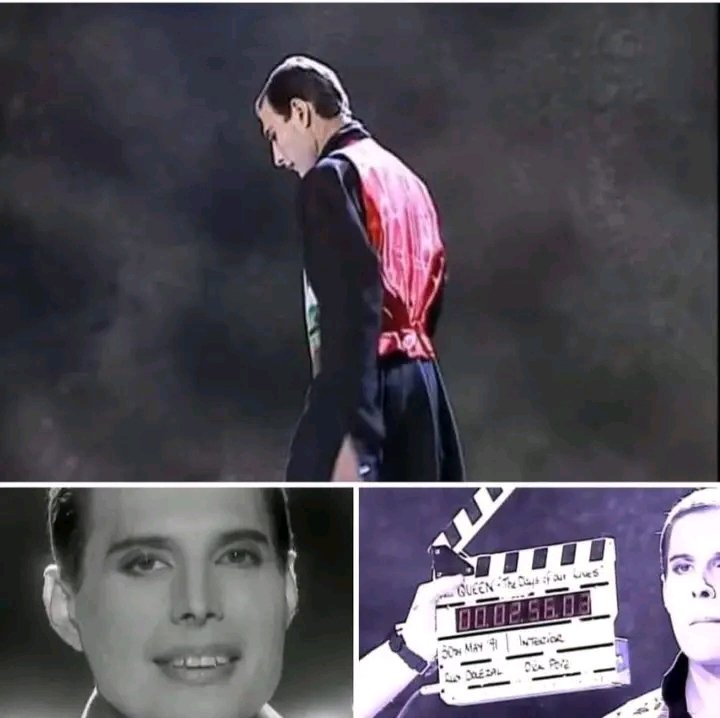Freddie Mercury’s Last Goodbye: The Making of “These Are the Days of Our Lives” and the Final Bow of a Legend Who Still Loved Us All
On May 30, 1991, at Limehouse Studios in London, something quietly monumental unfolded — the final video Queen would ever film with their iconic frontman, Freddie Mercury. The song was “These Are the Days of Our Lives”, a wistful, tender reflection on time, memory, and love. Behind the camera, those present understood they were witnessing not just another performance, but a farewell from one of the greatest voices the world had ever known.
By then, Freddie Mercury was already deeply weakened by the effects of AIDS, the illness he had kept private even as rumors circulated and the press hounded him relentlessly. And yet, on that day, he summoned one last performance — one last offering to his fans. Dressed in a flowing patterned waistcoat and bathed in soft, monochrome lighting to obscure his physical decline, Freddie stood in front of the camera with a grace and courage that was nothing short of heroic.
Brian May was notably absent from the shoot, as he was in New York at the time. His parts were later filmed separately and seamlessly integrated into the video, but the emotional core of the piece remained Freddie. Every glance, every slight smile, every movement in the video carried the weight of goodbye. And then, as if aware of the enormity of the moment, he ended the shoot with a phrase he had often used to close Queen concerts: “I still love you.”
It was simple. But it said everything.
That final phrase wasn’t scripted. It wasn’t planned. It came from Freddie’s heart — a message not just to the camera, not just to his bandmates, but to the millions who had followed his voice through decades of triumph, flamboyance, vulnerability, and power. In those four words, he distilled an entire career, a life lived boldly, and a love for his audience that death could not diminish.
There is a tragic beauty to “These Are the Days of Our Lives.” The song itself — written by Roger Taylor — became a mirror of Freddie’s state of mind: reflective, sorrowful, but never bitter. Instead of anger, there is peace. Instead of fear, there is gratitude. And through it all, there is love — unshaken, unconditional, eternal.
To this day, that final performance remains one of the most poignant farewells in music history. Not with drama. Not with fireworks. But with honesty and humility. Freddie Mercury, who once commanded stadiums with operatic flair and vocal thunder, chose to exit quietly, lovingly, and with dignity.
And we still love him.
Because Freddie Mercury was more than a singer. He was a force of nature, a giver of joy, a symbol of freedom and authenticity. His final message to us — “I still love you” — echoes across time, reminding us that love doesn’t die with the body. It stays. It sings. It survives.
We still love you, Freddie. Always.
